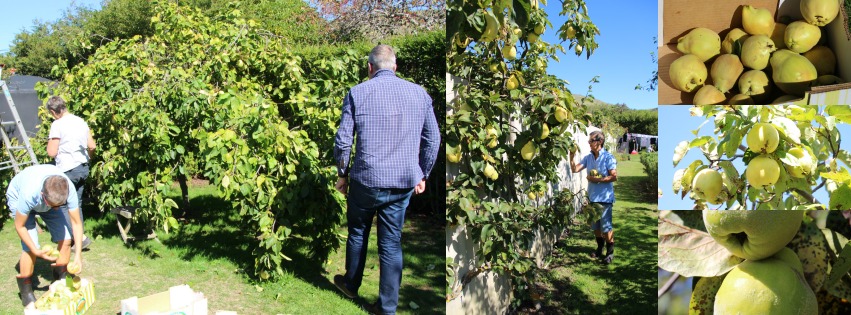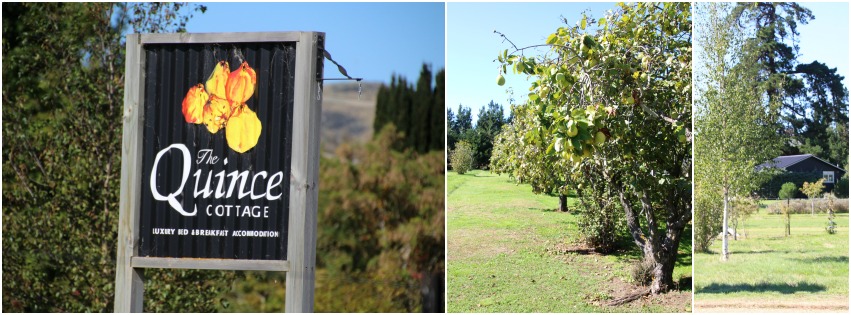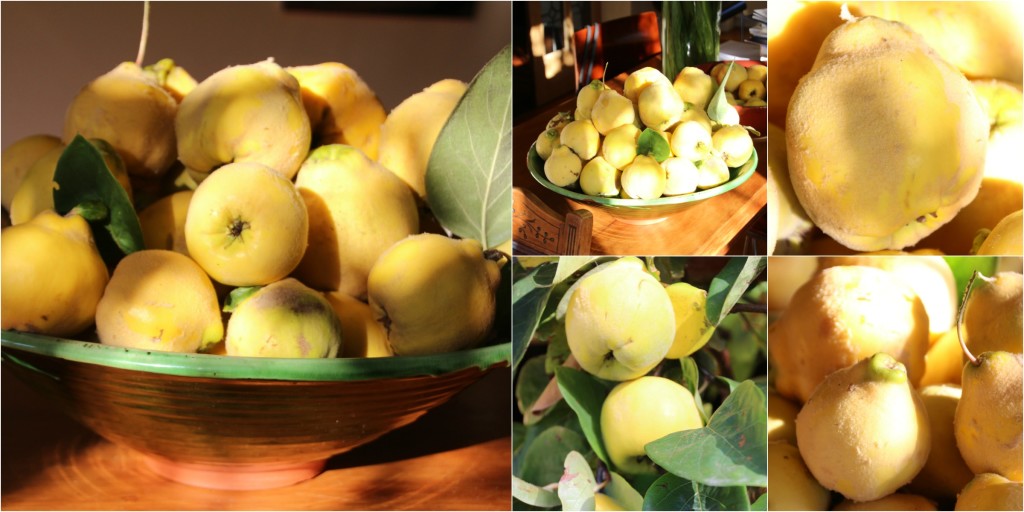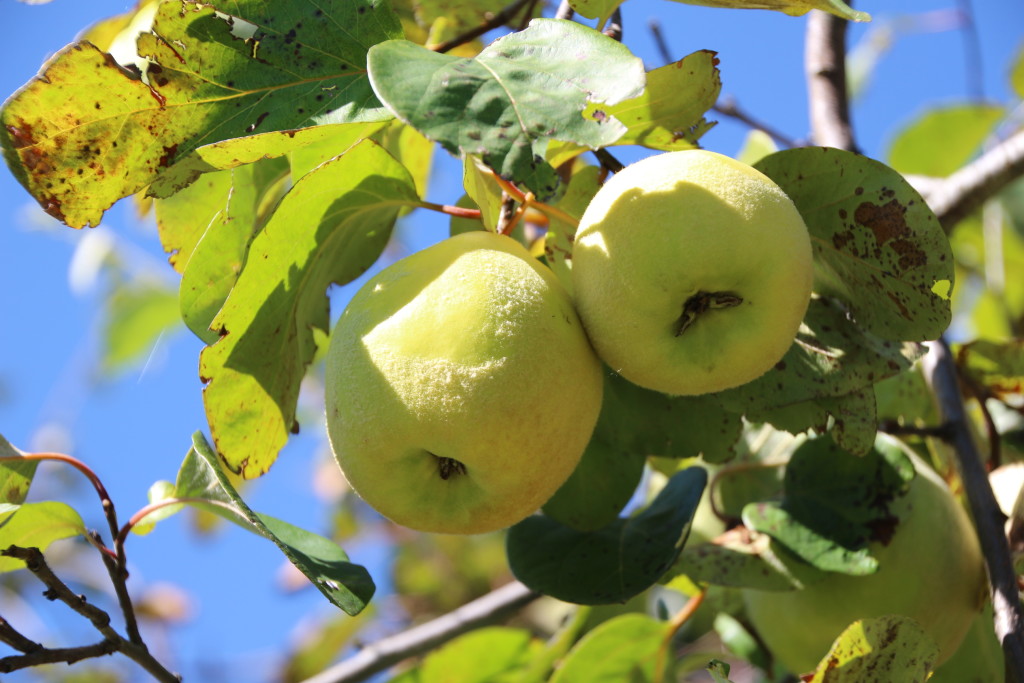Quince – Rewarding, Frustrating, Gorgeous, Hard work, Delicious and completely Unique.
How can an inedible fury rock hard fruit become elegant, change its colour to ruby red and have a sweet perfume suitable for jelly, paste and poaching. Many cultures bake it with meat or stuff it with mince. It has beautiful blossom and is perfect for espaliering against a wall if you have limited space

Central Otago has ideal conditions for growing Quince and after a couple of nights in Wanaka recently, we stopped at our friends in Millers Flat. They have a thriving fabulous boutique BandB called’ Quince Cottage’ – catering for all the cyclists on the new bike Trail. We easily filled 3 boxes from one tree in 10 minutes and it was still laden.


Back in Dunedin we picked our own Quince – After a hard prune last year our espaliered trees have beautiful fruit.
This week we get to enjoy large bowls sitting on the kitchen table filled to the brim with fruit and infusing the kitchen with Quince perfume.

In a few days I will be making Quince jelly and paste and hopefully getting some help from Phil to peel and chop.
It’s all worth it though and there will definitely be enough left to poach for cakes and pies.
I now make jelly and paste at the same time … I use the jelly topping fresh scones, deglazing a frying pan after cooking lamb, beef or venison and the paste is the best with cheese or a for a filling in friands.
Make the most of this extraordinary season fruit. Take some time to preserve it and enjoy your effort during the year.
Quince Jelly
1kg Quince
4 cups water
Granulated sugar
2 teaspoons lemon juice
Wash quince and remove the fuzz.
Peel and Core. Place the quinces quarters into a large saucepan with 2 cups of water.
Place the peelings and cores in a saucepan with 2 cups of the water. Bring to the boil and simmer for 30 minutes. Strain the liquid and make it up to 2 cups with water. Add to the quince and simmer gently for up to an hour or until the quince flesh is tender.
Line a colander with a clean tea towel or muslin. Sit it over a bowl and pour in the quince mixture. Don’t squeeze it but I find it drains enough in an hour – or you can leave it overnight.
Measure the juice into a large clean saucepan. For each cup of juice add 2 ½ cups sugar. Stir until the sugar dissolves. Add the lemon juice.
Boil rapidly for 25 minutes – or so. Test by putting a little on a plate. Leave it to cool. Run your finger across the surface and it is done if it wrinkles.
Pour into hot sterilised jars.
Quince Paste
Quince Pulp from making the jelly
Granulated sugar
Puree the quince pulp in a food processor and sometimes I push it through a sieve too.
Measure the puree into a deep heavy based pan.
Add 1 cup of sugar and ¼ cup water to each cup of pulp. Stir over a low heat until the sugar has dissolved.
Bring to the boil and simmer steadily stirring occasionally so the paste cooks evenly.
The paste will get thick and produce big bubbles – I use a frying guard to stop the bubbling on my hands or all around the range. Be careful.
It is cooked when the paste comes away from the sides of the pan and it is a dark red colour.
I put mine into a plastic container – leave the lid off for a few days to help it firm up.
When dry and firm – cut with a sharp knife..
